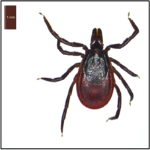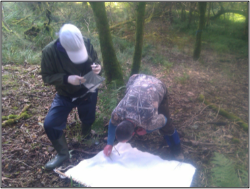Vertebrate Host Communities and the Risk of Lyme Disease in Scotland
Researcher(s): Caroline Millins
Supervisor(s): Roman Biek, Lucy Gilbert (James Hutton Institute)
Department: Institute of Biodiversity, Animal Health and Comparative Medicine, MVLS
Institution: University of Glasgow
Brief Description: Lyme disease, caused by the bacterium Borrelia and transmitted by ticks, is the most common vector-borne disease in Europe. Despite its broad distribution, the prevalence of Borrelia in questing ticks, and thus the risk of exposure, can be highly variable across time and space. So far, the ecological drivers underlying this temporal and spatial variation remain poorly understood. This project uses SCENE and the habitats around Loch Lomond to understand how differences in vertebrate communities that constitute the natural reservoir for the disease, affect the dynamics of tick vector populations and Borrelia infection. This question is examined from multiple angles including Scotland-wide surveys of forested sites as well as focal studies around Loch Lomond. One of these focal studies examines how tick populations and their phenology have changed over the past decades,
in Europe. Despite its broad distribution, the prevalence of Borrelia in questing ticks, and thus the risk of exposure, can be highly variable across time and space. So far, the ecological drivers underlying this temporal and spatial variation remain poorly understood. This project uses SCENE and the habitats around Loch Lomond to understand how differences in vertebrate communities that constitute the natural reservoir for the disease, affect the dynamics of tick vector populations and Borrelia infection. This question is examined from multiple angles including Scotland-wide surveys of forested sites as well as focal studies around Loch Lomond. One of these focal studies examines how tick populations and their phenology have changed over the past decades,  using long-term data on tick infestation collected from songbirds. Other work investigates the role of invasive grey squirrels and of deer in maintaining and altering local transmission cycles of Borrelia. The results of this project will advance our understanding how shifts in biological communities, driven by various forms of environmental change, can affect the risk of Lyme disease.
using long-term data on tick infestation collected from songbirds. Other work investigates the role of invasive grey squirrels and of deer in maintaining and altering local transmission cycles of Borrelia. The results of this project will advance our understanding how shifts in biological communities, driven by various forms of environmental change, can affect the risk of Lyme disease.
Funding Source(s): BBSRC Doctoral Training Grant
Project Status: ongoing
Start Date: 1/10/2012
End Date: 30/09/2014

